
Soil and Water Research
Scope & Guideline
Navigating Climate Challenges with Groundbreaking Research
Introduction
Aims and Scopes
- Soil and Water Quality Assessment:
Research focusing on the assessment of soil and water quality, including the effects of pollutants, heavy metals, and organic contaminants on environmental health and agricultural productivity. - Sustainable Agricultural Practices:
Studies investigating irrigation techniques, soil management practices, and crop selection aimed at improving water use efficiency and enhancing agricultural sustainability. - Erosion and Sediment Control:
Exploration of soil erosion mechanisms, sediment yield prediction, and management strategies to mitigate land degradation and promote soil conservation. - Innovative Remediation Techniques:
Research on novel approaches for the remediation of contaminated soils and waters, including bioremediation, nanotechnology, and green synthesis methodologies. - Climate Change Impact and Adaptation:
Investigations into the effects of climate variability on soil and water resources, including the development of adaptive strategies for agricultural systems in changing climates. - Geospatial Analysis and Decision Support Systems:
Utilization of geospatial tools and modeling techniques to assess environmental risks, manage water resources, and support decision-making in land-use planning.
Trending and Emerging
- Microplastic and Anthropogenic Pollution Research:
There is a growing interest in understanding the sources, impacts, and remediation of microplastics and other anthropogenic pollutants in soil and water systems, reflecting increased awareness of environmental contamination. - Innovative Water Management Strategies:
Research focusing on advanced irrigation methods, water conservation practices, and the integration of renewable energy in water management systems is emerging, highlighting the need for sustainable solutions in water-scarce regions. - Climate Change Adaptation in Agriculture:
An increasing number of studies are addressing the impacts of climate change on agricultural practices and water resources, emphasizing adaptation strategies that enhance resilience in farming systems. - Geospatial Technologies in Environmental Research:
The integration of geospatial analysis and modeling techniques is trending, with researchers utilizing these tools for better decision-making in soil and water management and environmental assessments. - Soil Health and Microbial Diversity Studies:
Research exploring the relationship between soil health, microbial diversity, and ecosystem services is gaining traction, reflecting a holistic approach to understanding soil ecosystems.
Declining or Waning
- Traditional Soil Classification Techniques:
The emphasis on conventional soil classification methods has decreased as newer techniques, such as machine learning and geospatial analysis, gain traction, reflecting a shift towards more innovative and efficient approaches. - General Environmental Pollution Studies:
Research that broadly addresses environmental pollution without a specific focus on soil or water quality has become less frequent, as the journal increasingly prioritizes targeted studies that link pollution to specific remediation strategies. - Historical Land Use Studies:
While historical analyses of land use provided valuable insights, recent publications have shifted towards contemporary issues, particularly those related to climate change and current agricultural practices. - Basic Agricultural Practices:
Papers focusing solely on basic agricultural practices without addressing sustainability or innovative technologies have seen a decline, as the journal seeks to highlight more advanced and sustainable agricultural research.
Similar Journals

Agronomy-Basel
Pioneering Insights for a Greener TomorrowAgronomy-Basel is a leading international journal dedicated to advancing the field of agronomy and crop science, published by the respected MDPI. Since its inception in 2011, this open-access journal has provided a vital platform for the dissemination of high-quality research, featuring innovative studies and reviews that contribute to the understanding of agricultural practices and crop management. With an impressive impact factor and ranked in the Q1 quartile of its category for 2023, Agronomy-Basel has established itself as a premier resource in the realm of Agricultural and Biological Sciences, achieving a commendable rank of #62 out of 406 in its field, placing it in the 84th percentile. The journal targets researchers, professionals, and students who are dedicated to enhancing agricultural sustainability and productivity. Located in Basel, Switzerland, the journal's commitment to open access empowers global accessibility to flourishing agricultural advancements, thus fostering collaboration and innovation across the globe.
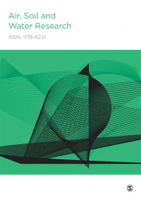
Air Soil and Water Research
Empowering Research for a Healthier PlanetAir Soil and Water Research is a premier open access journal published by SAGE Publications Ltd, dedicated to the interdisciplinary study of environmental science. Since its inception in 2008, this journal has provided a vital platform for researchers and professionals to disseminate findings that enhance our understanding of the interconnectedness of air, soil, and water systems. With an impressive impact factor and a ranking of #43 out of 233 in the General Environmental Science category, the journal proudly occupies the Q2 quartile within its field, demonstrating its influence and contribution to environmental research. The journal's editorial board comprises leading scientists and experts committed to ensuring high-quality publications that address important environmental challenges. Accessible to all, it provides a wealth of knowledge and resources for academics, practitioners, and policymakers looking for innovative solutions to pressing ecological issues.
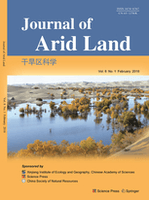
Journal of Arid Land
Illuminating challenges and opportunities in dry environments.Journal of Arid Land, published by SPRINGER HEIDELBERG, is a pivotal platform dedicated to advancing knowledge in the fields of Earth-Surface Processes, Management, Monitoring, Policy and Law, and Water Science and Technology. With an ISSN of 1674-6767 and an E-ISSN of 2194-7783, this journal stands out as a prominent source of scholarly research focusing on the unique challenges and opportunities of arid and semi-arid environments, particularly relevant in the context of global climate change. As of 2023, it holds a commendable Q2 ranking in several critical categories, underscoring its impact in environmental science and related disciplines. The journal, which has been in publication since 2009 and is set to continue through 2024, provides unrestricted access to high-quality research that sheds light on sustainable practices and effective policies. With its focus on arid lands, the Journal of Arid Land plays an essential role in fostering interdisciplinary dialogue among researchers, practitioners, and policymakers striving to address the pressing issues faced by these ecosystems.

EURASIAN SOIL SCIENCE
Innovating solutions for soil conservation and management.EURASIAN SOIL SCIENCE, published by PLEIADES PUBLISHING INC, is a premier journal dedicated to advancing knowledge in the fields of soil science and earth-surface processes. With an ISSN of 1064-2293 and an E-ISSN of 1556-195X, this journal has been a key resource for researchers and professionals from its inception in 1992 and continues to thrive as it converges toward 2024. Situated in the United States, EURASIAN SOIL SCIENCE has achieved notable recognition, attaining a Q2 ranking in both Earth-Surface Processes and Soil Science categories as of 2023. Its Scopus rankings further underscore its importance, with Earth and Planetary Sciences placing it at #81/179 and Agricultural and Biological Sciences ranking it at #80/159. Engaging a global audience, this journal publishes cutting-edge research articles, reviews, and case studies that address critical issues related to soil health, conservation, and management. Though currently not open access, the journal offers valuable insights and fosters collaboration among scientists and practitioners, underscoring its vital role in enhancing the understanding of soil dynamics and sustainability.
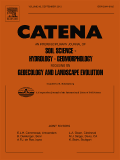
CATENA
Shaping the Future of Earth-Surface ProcessesCATENA is a distinguished academic journal published by Elsevier, focusing on the critical field of Earth-Surface Processes. With a solid foundation established in 1973, CATENA has continuously evolved, offering a platform for high-impact research and groundbreaking discoveries in geosciences. The journal holds an impressive Scopus rank of #8 out of 179 in its category, placing it in the top 5% of its field, which underscores its importance and influence among researchers and practitioners alike. While CATENA does not operate under an open access model, its commitment to disseminating essential findings is evident in its rigorous peer-review process and inclusion of diverse studies. Located in the Netherlands, CATENA not only serves as an essential resource for professionals and students but also contributes valuable insights that help address global environmental challenges.
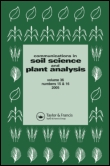
COMMUNICATIONS IN SOIL SCIENCE AND PLANT ANALYSIS
Empowering Researchers to Transform Agricultural PracticesCOMMUNICATIONS IN SOIL SCIENCE AND PLANT ANALYSIS, published by Taylor & Francis Inc, is a prestigious journal dedicated to advancing research in the fields of agronomy, crop science, and soil science. Established in 1970, the journal has maintained a significant presence over the years, with a commitment to publishing high-quality, peer-reviewed articles that contribute to the understanding of soil and plant interactions. With an impressive Q2 ranking in both Agronomy and Soil Science, it positions itself as a vital resource for researchers, professionals, and students alike, keen on exploring innovative solutions to contemporary agricultural challenges. Although it currently does not provide open access, the journal ensures wide dissemination through its established subscription services. The journal's focus on empirical research, methodologies, and technological advancements in soil management and plant nutrition makes it an essential platform for disseminating knowledge and fostering discussions within the scientific community. Located in the heart of Philadelphia, USA, it remains a significant contributor to the global dialogue on sustainable agriculture and environmental stewardship.
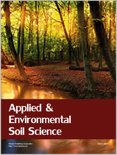
Applied and Environmental Soil Science
Driving impactful research for a sustainable future in soil science.Applied and Environmental Soil Science, an esteemed journal published by HINDAWI LTD, focuses on disseminating high-quality research in the fields of soil science and environmental applications. With an ISSN of 1687-7667 and an E-ISSN of 1687-7675, this open-access journal has been a vital resource for the academic community since its inception in 2009. As of 2023, it holds a commendable position in the Q2 category for both Earth-Surface Processes and Soil Science, highlighting its impact in these crucial disciplines. The journal’s rankings further affirm its significance within the field, being placed 61st in Earth and Planetary Sciences and 58th in Agricultural and Biological Sciences. Researchers and practitioners alike benefit from the collaborative platform it offers for sharing innovative studies essential for sustainable soil management and environmental integrity. With a focus on advancing knowledge and fostering interdisciplinary dialogue, Applied and Environmental Soil Science stands as a crucial pillar for scholars and professionals dedicated to addressing the pressing challenges of soil and environmental health.
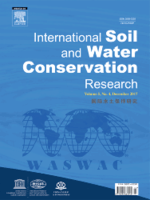
International Soil and Water Conservation Research
Advancing sustainable solutions for soil and water conservation.International Soil and Water Conservation Research is a premier, peer-reviewed academic journal dedicated to advancing the field of soil and water conservation. Published by KEAI PUBLISHING LTD in China, this Open Access journal has established itself as a vital resource since its inception in 2013, offering researchers and practitioners an unparalleled platform for sharing innovative research and methodologies. With its impressive impact factor and recognition as a Q1 category journal in Agronomy, Water Science, Nature and Landscape Conservation, and Soil Science, it ranks among the top journals in its field, as evidenced by its high Scopus ranks—with ranks such as #10 in Soil Science and #12 in Nature and Landscape Conservation. The journal is committed to not only enhancing the scientific community's understanding of conservation practices but also addressing global challenges related to sustainable land and water resource management. By fostering interdisciplinary collaboration, International Soil and Water Conservation Research serves as an essential reference point for scholars, professionals, and students aiming to contribute to sustainable practices and policies in the context of agriculture and environmental management.

Terra Latinoamericana
Championing Open Access for Groundbreaking DiscoveriesTerra Latinoamericana is a prominent academic journal published by the Mexican Society of Soil Science, focusing on the essential disciplines of soil science, biochemistry, and ecology. With a dedicated commitment to open access since 2014, this journal provides a platform for researchers and professionals to disseminate and access cutting-edge research aimed at understanding soil interactions, environmental pollution, and ecosystems within Latin America. The journal holds a Q4 ranking in multiple categories, including Ecology and Soil Science, reflecting its growing presence in the academic landscape and its role in fostering scholarly communication within these fields. Though currently positioned in the lower quartiles, Terra Latinoamericana presents a valuable opportunity for emerging scholars and experienced researchers alike to contribute impactful findings and engage with key issues affecting soil health and ecological sustainability in diverse environments. By promoting innovative research and collaborative dialogue, this journal continues to shape the future of soil science and related disciplines, making it an indispensable resource for the scientific community.
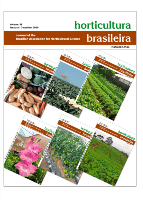
Horticultura Brasileira
Unlocking the potential of horticultural innovation.Horticultura Brasileira is a leading open access journal published by the ASSOC BRASILEIRA HORTICULTURA, dedicated to advancing research in the fields of horticulture, plant science, and soil science. With an ISSN of 0102-0536 and an E-ISSN of 1806-9991, this journal has been an integral part of the scientific community since its inception, embracing open access practices since 1999. Based in Brazil, it provides a platform for researchers to disseminate their findings and contribute to the growing body of knowledge in horticultural science and related disciplines. Despite its current Q3 ranking in multiple categories such as Horticulture, Plant Science, and Soil Science within Scopus, the journal continues to attract a diverse array of scholarly articles, fostering innovation and collaboration among scientists. The journal aims to bridge the gap between research and practical applications, making it an invaluable resource for students, professionals, and academics alike who are looking to expand their understanding and impact in the field.